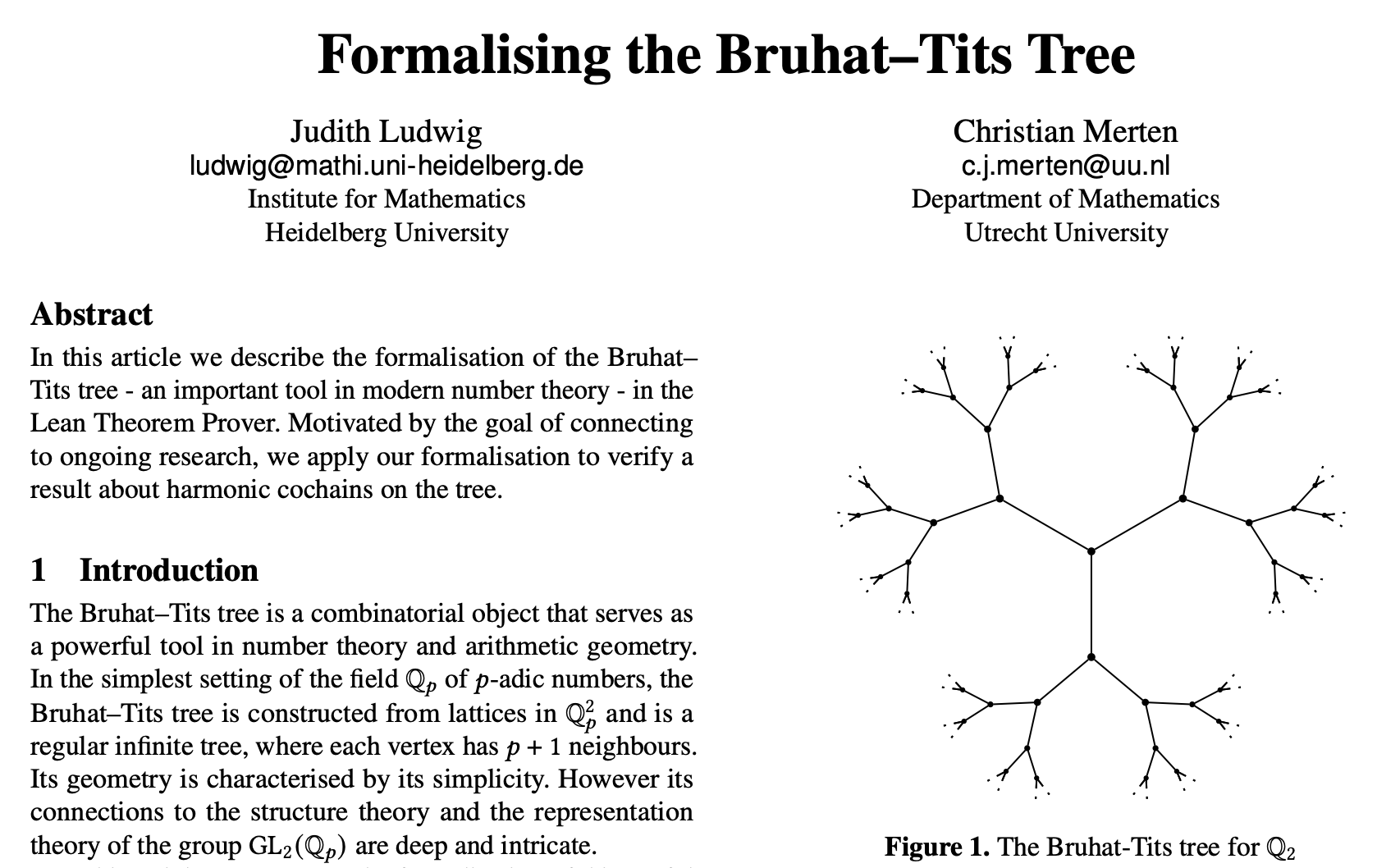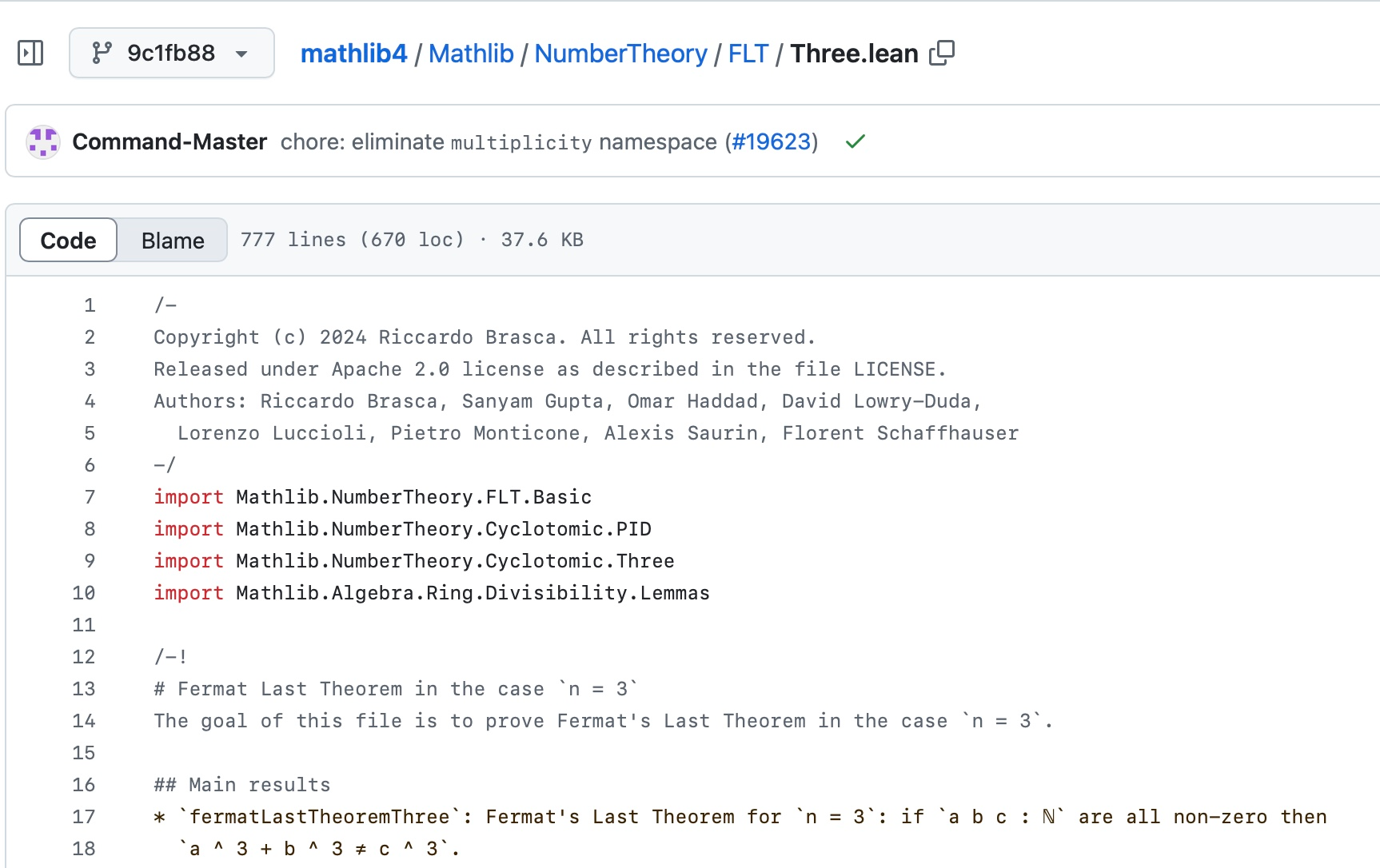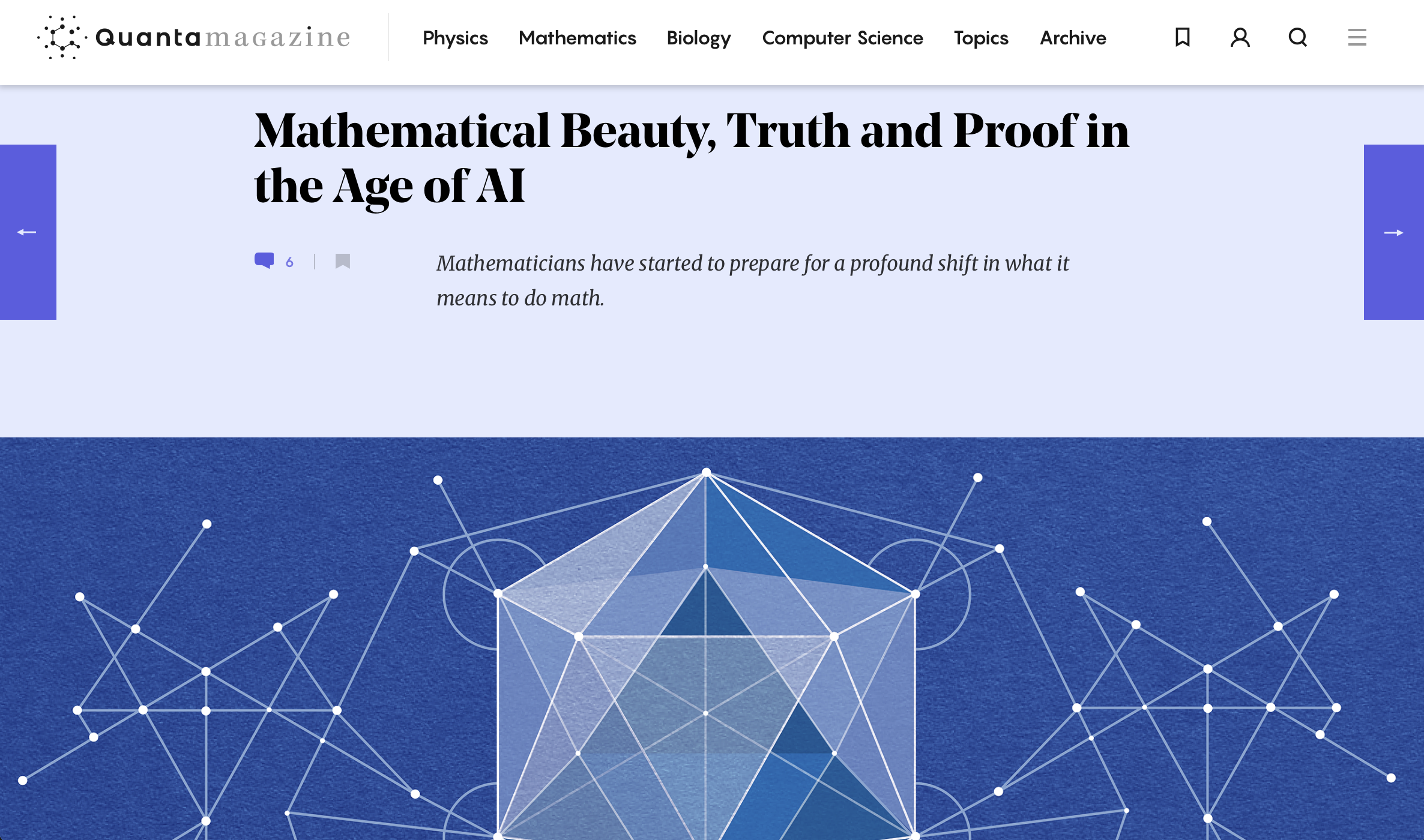Research-oriented teaching
- The Computer-assisted mathematics student seminar was created in 2023. It runs every year. Three Bachelor theses have already emerged from it. More will follow soon.
- The Heidelberg Experimental Geometry Lab (HEGL) has created a Heidelberg Lean Game to introduce more students to Lean. Our initiative will be the topic of an article in the Bulletin of the German Mathematical Society (DMV).
- Dr. Vogel is formalising his and Dr. Kasten's book on the Foundations of Plane Geometry.
- F.S. has given lectures on Interactive Theorem Proving in Lean for young resarchers, at the Heidelberg Graduate School (MathComp) and at the Max Planck Institute for Mathematics in the Sciences in Leipzig.
Contributions to research
- Prof. Ludwig has a recent preprint on the formalisation of the Bruhat-Tits tree.
- Dr. Xu is a prominent Mathlib contributor, currently involved in the formalisation of Fermat's Last Theorem.
- Prof. Ludwig and F.S. have also contributed to Mathlib.


An area of active interdisciplinary research
- Mathematical software libraries are shaping the future of our discipline.
- Interactive Theorem Provers will keep improving and gain traction.
- We aspire to keep expanding and make Heidelberg University a leader in the field.
Discussion panel: A shift in mathematics?
